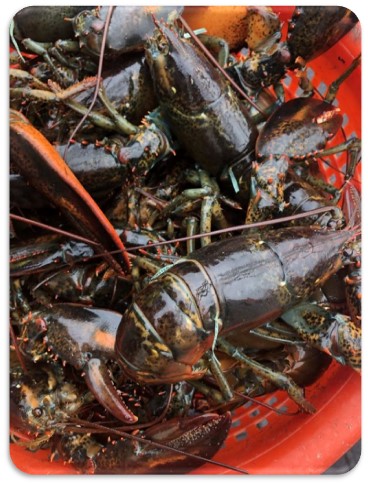Why American Lobster?
Canada's lobster industry is by far the most valuable fishery across the country. It accounts for over 40% of all seafood landings in Canada, and was valued at 1.6 billion dollars in 2019. Nova Scotian lobster makes up over half of the total, at almost 900 million dollars in 2019. Within Nova Scotia, LFAs 33 and 34 are singlehandedly the most valuable lobster fishing areas. Lobster landings have been steadily increasing since the 1980’s primarily due to the collapse of the cod fishery and other groundfish fisheries, which are the primary predators of lobster. Landings are projected to continue to increase in future decades because of the release from predation from groundfish along with expansion of suitable habitat.

Why does lobster movement matter?
Temperature is a crucial factor in determining habitat suitability for lobster because as ectotherms, lobster behaviourally thermoregulate via migration and movement to stay within their preferred temperature range of 12-18°C. As waters warm, suitable habitat in the offshore region expands; already habitat expansion has been observed northward and further offshore. LFAs 33 and 34 are expected to have the greatest increase in suitable habitat; LFA 33 alone is expected to double in habitat suitability. The offshore region is predicted to act as a thermal refugia for lobsters as inshore waters warm beyond their thermal tolerance. Although sea surface temperature is a good predictor for how climate change will impact the pelagic life stages of lobster, sea surface temperature is a bad proxy for bottom temperatures due to water column stratification. Measuring bottom temperatures will allow for a more complete picture of how climate change will impact all life stages of lobster, and will be critical for creating adaptive management strategies in response to climate change.
A mark-recapture tagging program allows us to monitor lobster movement short term (e.g. seasonally) and long term over multiple years. Tag are retained for up to 3 moult cycles. Our mark-recapture study paired with our lobster characterization study allows us to see which lobster are moving where. Are there distinct groups of lobster that migrate together? Do larger lobsters prefer to stay offshore year-round?